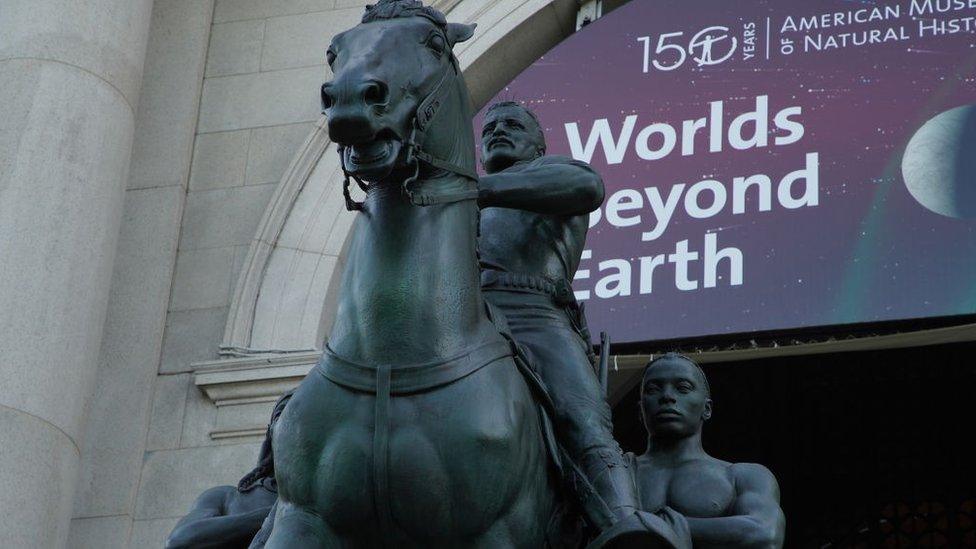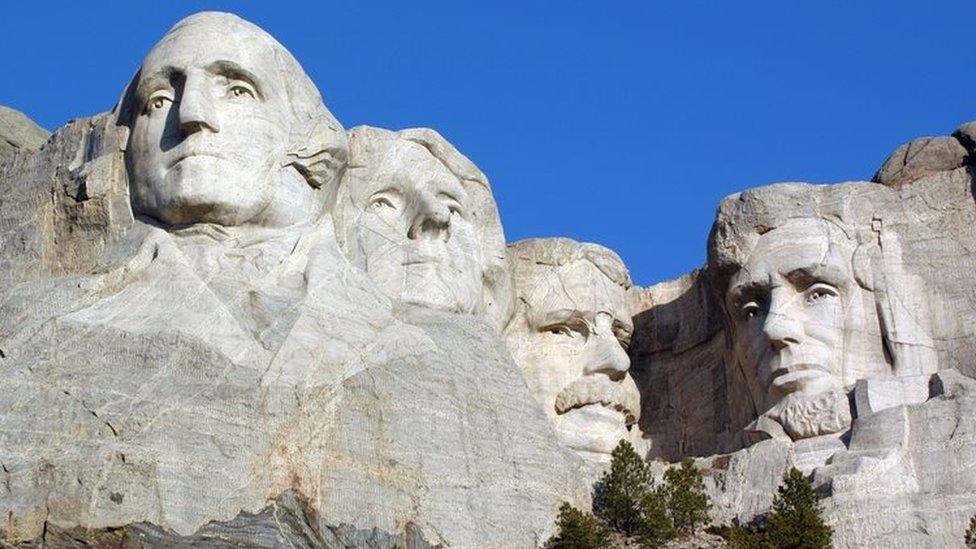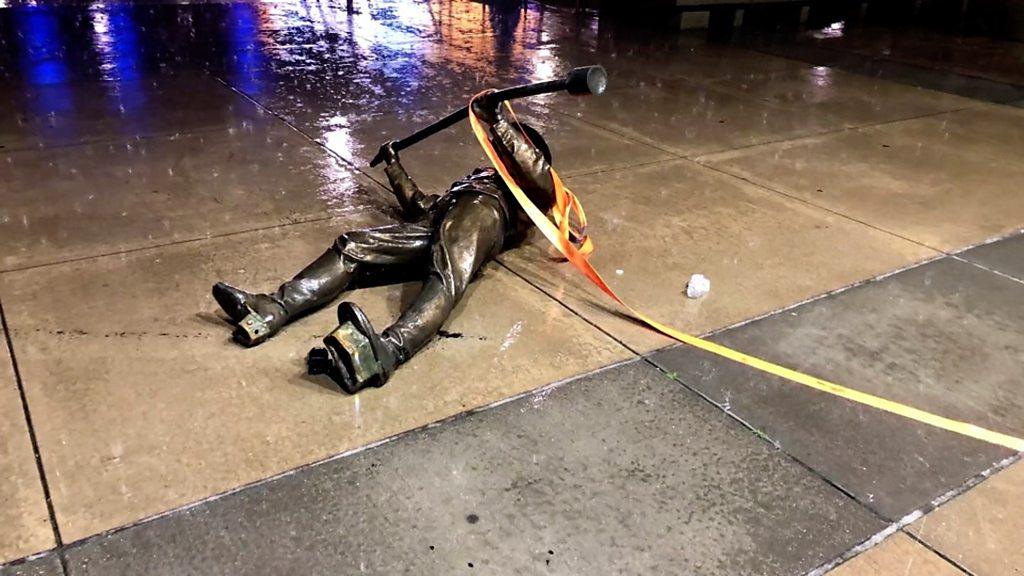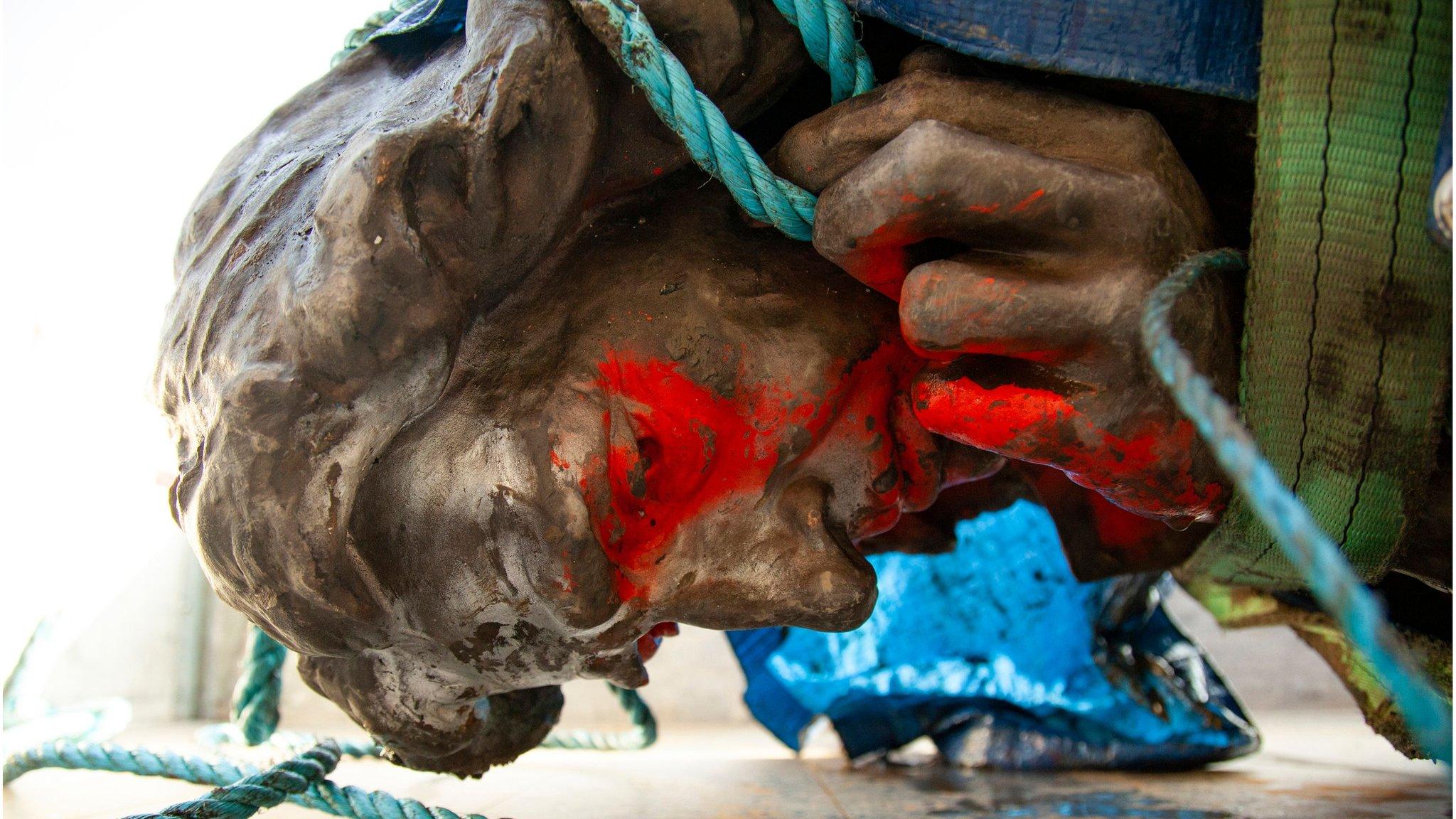Theodore Roosevelt statue to be removed by New York museum
- Published

It has not been announced what will happen to the statue
A bronze statue of former US President Theodore Roosevelt is to be removed amid an ongoing backlash against symbols of racial bias and imperialism.
The statue outside the American Museum of Natural History in New York shows Roosevelt on horseback flanked by a Native American man and an African man.
A great-grandson of the president agreed with the removal, saying it did not reflect Roosevelt's legacy.
But President Donald Trump tweeted: "Ridiculous, don't do it!"
There has been a heated debate in the United States over the appropriateness of certain statues and commemorations since the death in police custody of African American George Floyd.
Symbols linked to the US Confederacy, which supported slavery, have been particularly targeted in the US.
Monuments to Christopher Columbus, the 15th Century explorer whose voyages on behalf of Spain opened the way for the European colonisation of the Americas, have also been criticised in the US as symbols of imperialism.
But the anti-statue campaign, arising from the Black Lives Matter movement, has spread globally, with monuments targeted in a number of countries.
What's behind the museum's decision?
The statue has stood outside the museum's Central Park West entrance since 1940.
Mayor Bill de Blasio said on Sunday: "The museum has asked to remove the Theodore Roosevelt statue because it explicitly depicts black and indigenous people as subjugated and racially inferior."
He said he backed the decision, adding it was "the right time to remove this problematic statue".
Protesters across America have toppled statues associated with slavery
The museum's president, Ellen Futter, said the world had become focused on "statues as powerful and hurtful symbols of systemic racism".
She said the decision was based on the composition of the statue and not on Roosevelt, whom the museum would continue to honour.
A great-grandson of the former president, Theodore Roosevelt IV, told the New York Times: "The composition of the equestrian statue does not reflect Theodore Roosevelt's legacy. It is time to move the statue and move forward."
Activists opposed to symbols of colonial expansion and racial discrimination have wanted the statue removed for many years.
President Trump did not agree, tweeting his opposition early on Monday:
Allow X content?
This article contains content provided by X. We ask for your permission before anything is loaded, as they may be using cookies and other technologies. You may want to read X’s cookie policy, external and privacy policy, external before accepting. To view this content choose ‘accept and continue’.

At a rally last week, the president condemned "the unhinged left-wing mob trying to vandalise our history, desecrate our monuments".
It has not yet been announced what will happen to the statue.
The legacies of Jefferson and Washington, both slave owners, have been heavily questioned in the recent anti-racism campaign, and even Lincoln's position on slavery is regarded as complicated.
Who was Theodore Roosevelt?
The Republican was one of the more flamboyant of the country's presidents, serving two terms from 1901-09, and is often ranked in the top five in terms of achievement.
But there is no doubt his legacy is complex - a man who won widespread praise for proposals that led towards a welfare state, while also advocating eugenics.
He was the first US president to invite a black man - a former slave and presidential adviser Booker T Washington - to dinner at the White House in 1901. The decision enraged southern states.
But according to biographer Edmund Morris, Roosevelt also believed black people were "altogether inferior to whites" and once remarked they were "two hundred thousand years behind" whites.
"Teddy", as he is known, is one of the four faces on the famous Mount Rushmore monument, where he joins Abraham Lincoln, Thomas Jefferson and George Washington.

Roosevelt wedges his moustache in between Jefferson and Lincoln
What do we do with the UK's symbols of slavery?
- Published20 June 2020

- Published18 June 2020

- Published10 June 2020
